Based Rollups can restore interoperability to Ethereum's Layer 2 ecosystem.
Written by: Yohan Yun
Compiled by: Luffy, Foresight News
Ethereum's Rollup-centric Layer 2 roadmap has successfully alleviated transaction congestion on the base layer (Ethereum mainnet) and effectively reduced gas fees, but at the cost of creating a fragmented liquidity ecosystem.
The original goal of Layer 2 was to scale the Ethereum network, but the reality now is that each Layer 2 network has become an isolated island, with each island having its own systems, rules, and barriers.
Layer 2 liquidity is isolated, users are trapped in cross-chain bridges between Layer 2s, and developers are forced to choose whether to build on Base, Arbitrum, or Starknet.
Fortunately, this predicament in the Ethereum ecosystem has seen a turning point. Over the past year, the community has increasingly discussed Based Rollups as a potential solution to the liquidity fragmentation problem. The community believes that Based Rollups will restore interoperability and composability to Layer 2, reviving the "money Legos" concept of DeFi Summer on Layer 2 (referring to the seamless interaction of DeFi protocols). In short, if Based Rollups deliver on all their promises, they will make the Ethereum ecosystem "more like Ethereum."
The fundamental problem that Based Rollups aim to solve is the use of separate transaction sorters on Layer 2. (Note: A sorter is an engine that orders transactions on a blockchain; current Rollup Layer 2s typically use a centralized sorter controlled by themselves, while Based Rollups sort transactions through the Ethereum mainnet.)
Blockchain developer Teddy Knox told Magazine: "When I first learned about the Layer 2 scaling roadmap from Vitalik Buterin's blog post, I found it a bit hard to accept because it involves trade-offs."
"Unlike Layer 1 (where Ethereum has a very large node committee to validate the network), the original form of Layer 2 is centralized sorters, which have special privileges to order transactions on the Layer 2 network."
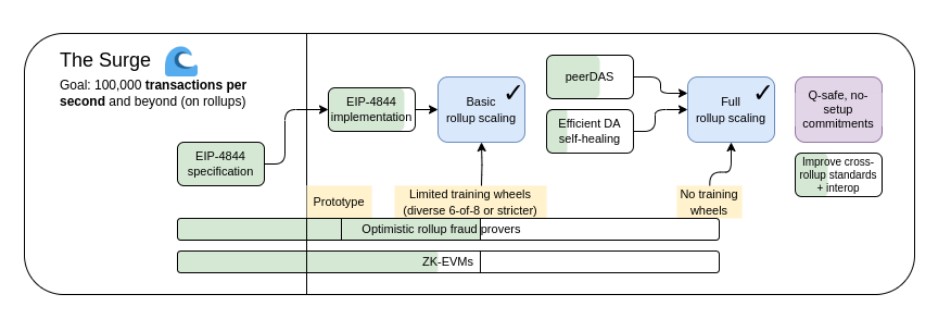
The goal of Ethereum's Surge roadmap is to achieve 100,000 TPS, source: Vitalik Buterin
Centralized Sorters Fragment Ethereum Layer 2
While centralized sorters operate very efficiently and allow operators to profit significantly, they also lead to isolation between different Layer 2s. Transactions processed by one Layer 2 sorter cannot easily match and interact with other Layer 2s, and this lack of interoperability has been a major reason for community FUD regarding Ethereum this year. (Interoperability between Layer 2s can still be achieved through other methods outside of shared sorters, but these methods are "asynchronous," meaning transactions are not real-time).
Thus, Based Rollups proposed by Ethereum researcher Justin Drake (not to be confused with Coinbase's Layer 2 solution Base) offer a solution that hopes to address this fragmentation issue.
Unlike traditional Rollups, Based Rollups return the power of transaction sorting to the Ethereum mainnet (Layer 1). Before the popularity of Layer 2, transaction sorting on the Ethereum network was handled by Layer 1.
Daniel Wang, co-founder of Taiko Labs, stated: "The method of sorting in Based Rollups not only enhances the security of the Ethereum network but also improves its revenue potential and the cohesion of the ecosystem, ensuring that Layer 2 aligns more closely with the Ethereum mainnet, facilitating cheaper and faster transactions while supporting the sustainability of the Ethereum network." Taiko Labs has developed the first production-grade Based Rollup using Based sorting.
Compared to other Rollups that use centralized sorters, Taiko is able to bring significantly more revenue to Ethereum, approximately five times that of traditional Rollups.
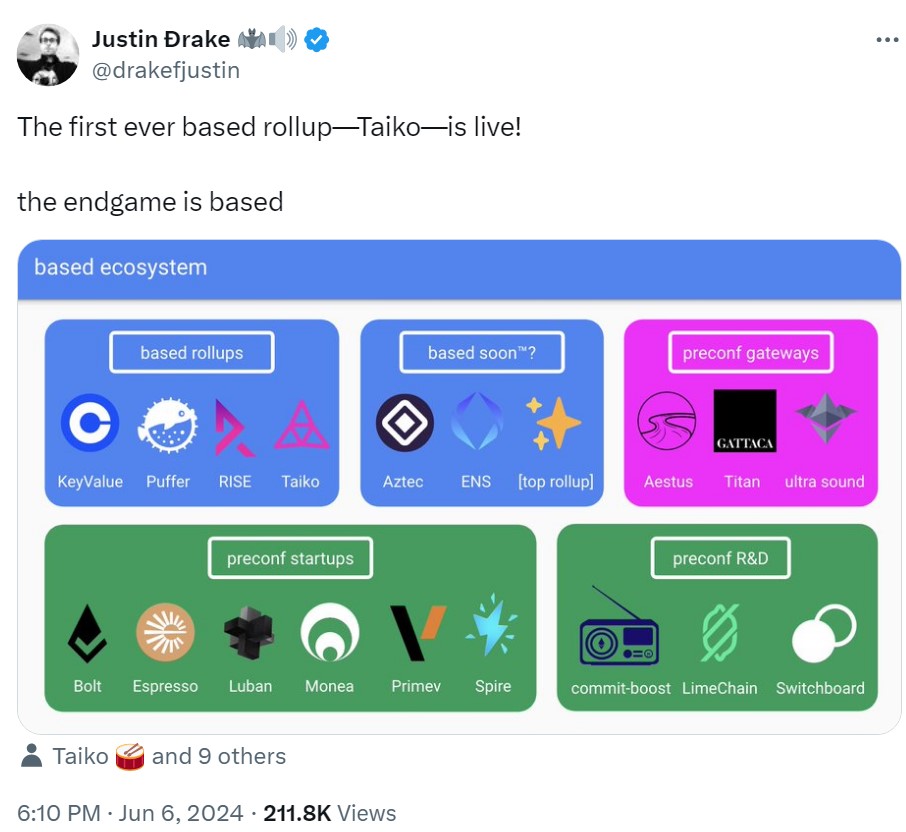
Taiko is the first Based Rollup Ethereum scaling solution. Source: Justin Drake Twitter
Based Rollup and Composability
Based Rollups sound promising, but like anything, they have their pros and cons, and Based Rollups also come with a series of issues.
For users to enjoy the benefits of Based Rollups, other Layer 2s must also adopt them. For Taiko, they are collaborating with Nethermind's Rollup Surge chain, which will be specifically designed to allow users to skip the Ethereum mainnet and directly interact with Taiko in cross-chain transactions.
However, Daniel told Cointelegraph at Devcon that despite being based on the same technology, the two Rollups still cannot achieve synchronous composability.
"You need to have almost real-time validity proofs to demonstrate that both are changing simultaneously," he said, "I don't think we've achieved that yet, but as a project, we can't wait until that is realized before launching."
Pros and Cons of Centralized Sorters
When operated by a single entity or a small group, sorters can effectively order transactions without the delays associated with decentralized consensus or Ethereum's 12-second block time.
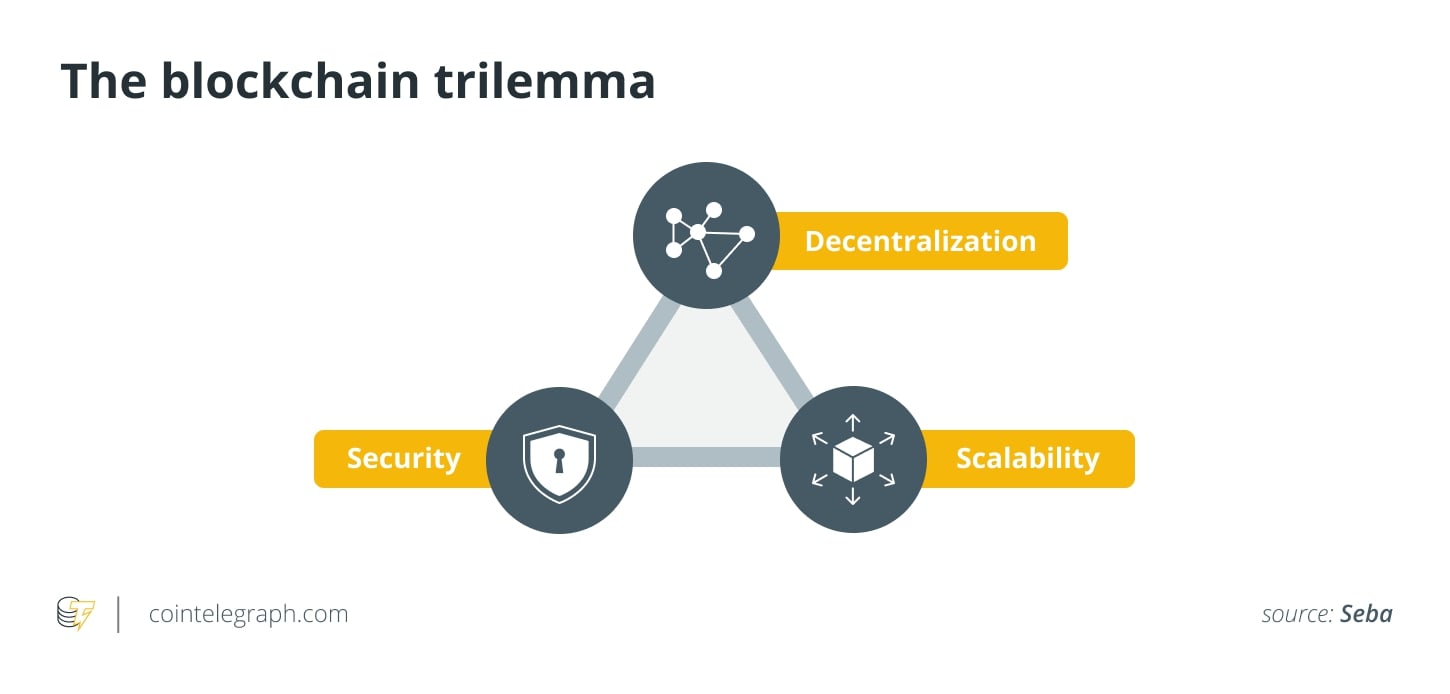
The blockchain trilemma illustrates the challenge of simultaneously optimizing decentralization, scalability, and security.
For many Layer 2 networks, sacrificing decentralization to provide throughput unmatched by the Ethereum mainnet is worth it, although this itself brings risks.
Knox explained: "If the sorter fails… it will impact performance, or they could easily censor your transaction without any other functionality."
Using centralized sorters reintroduces many of the issues that decentralization and blockchain originally sought to solve, such as censorship and single points of failure, with MEV (maximum extractable value) exploitation being a significant concern.
However, while these worries may keep Ethereum idealists awake at night, the biggest concern for ordinary users is the convenience of switching between Layer 2s.
Duncan Townsend, a smart contract engineer at the 0x protocol (a decentralized trading protocol), stated that the current process of transferring funds from one Ethereum Layer 2 to another "is not a great experience."
"Unless you use a chain abstraction protocol, the cross-chain user experience in DeFi is poor," he explained, "If you have Based features, you have composability. It doesn't matter which chain your tokens are on because you can obtain them at low cost on any chain you need."
If Rollups share this Based sorting framework, then tokens and assets should be able to interact directly with each other without relying on separate cross-chain mechanisms, achieving native interoperability between Rollups.
Challenges of Adopting Based Rollups
Based Rollups leverage Ethereum's validator network to sort transactions across multiple Layer 2s, restoring decentralized transaction sorting and creating a more unified and efficient ecosystem where developers can build DApps that run across all participating Layer 2s (those adopting Based Rollups).

As of November 20, the Ethereum mainnet has over 1 million validators. Source: Dune Analytics
However, getting existing Layer 2s to agree to give up lucrative sorter revenues is not a simple task.
Townsend said, "The shift to Based sorting faces a significant hurdle, which is that all current centralized Layer 2 sorters are making a fortune."
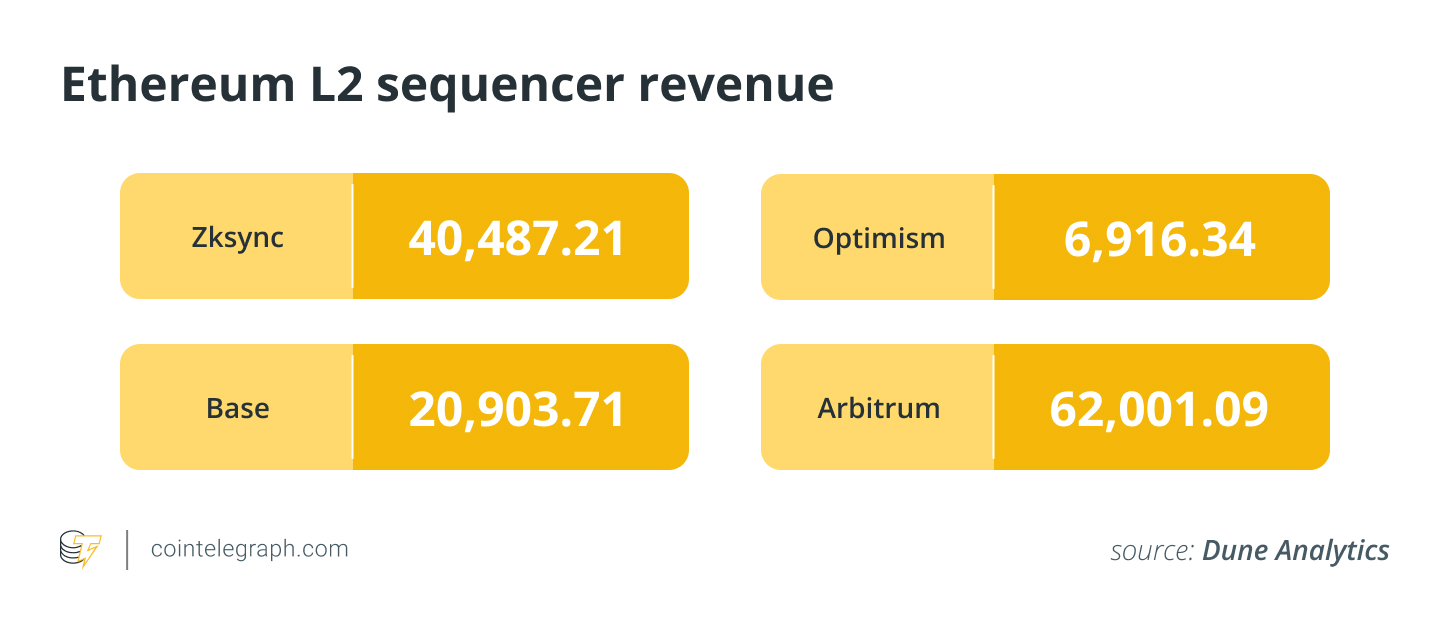
Sorter revenues of some top Ethereum Layer 2 networks, in ETH
According to data from Dune Analytics, as of November 20, ZKsync, which uses ZK Rollup, has accumulated nearly 40,500 ETH ($125.5 million) in sorting revenue. Additionally, its competitor Base, which uses Optimistic Rollup, has earned 20,904 ETH ($64.7 million), Arbitrum has earned 62,001 ETH ($192 million), and Optimism has earned 6,916 ETH ($21.5 million).
Will they really give up this revenue for the sake of idealism?
Based Rollups as a Remedy for Ethereum
Although Taiko's Daniel is indeed an idealist, he stated that the mechanism of Based Rollups helps ensure the security of Ethereum's base layer; because Layer 2 activity reduces Layer 1 activity, thereby decreasing validator revenue.
Daniel stated, "Based Rollups indeed provide additional fees, tips, and MEV opportunities for Layer 1 validators, which will encourage more validators to secure the Ethereum blockchain, ultimately making all Base Rollups more secure."
According to data from Growthepie, Taiko is the highest-paying Layer 2 to the Ethereum mainnet. In the 30 days leading up to November 21, Taiko paid $1.29 million in gas fees, nearly five times that of the second-ranked Arbitrum One.
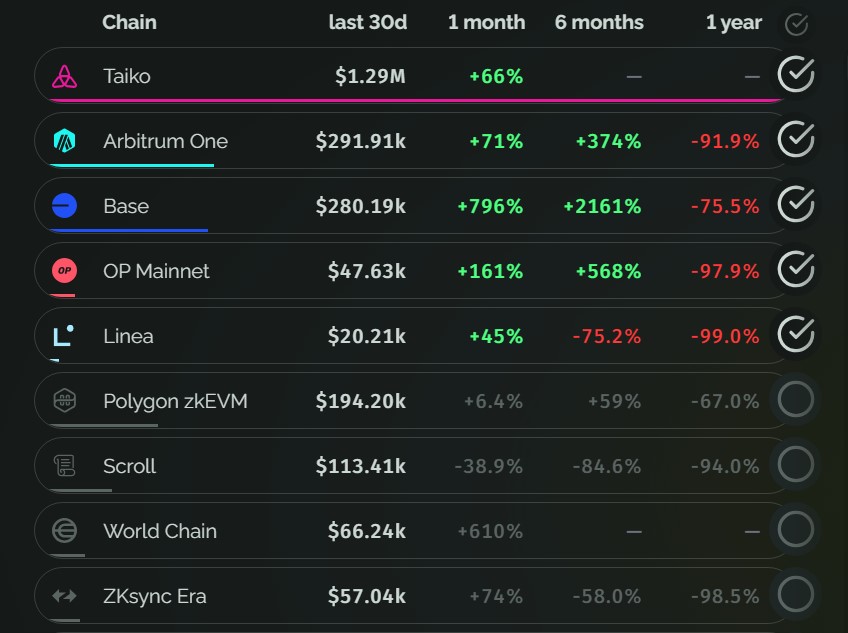
Taiko is the largest rent payer in Rollups on Ethereum, source: Growthepie
Based Rollups make it more profitable to be an Ethereum mainnet validator, encouraging staking, reducing the circulating supply of ETH, and potentially contributing to an increase in ETH prices in the long term.
The Future of Ethereum: Based Rollups? Or Fragmentation?
The blockchain of Based Rollups offers a potential solution to unify liquidity in the Ethereum ecosystem, but returning to the Ethereum mainnet for sorting may also raise old issues.
Daniel said the key trade-off of Based Rollups is that they are constrained by Ethereum's current 12-second block time. Other Rollups have much shorter transaction times, such as Arbitrum's transaction time of less than 1 second.
"We are working with partners on (transaction) pre-confirmation, which will allow Based Rollups to overcome the longer block time limitations of the Ethereum mainnet, providing users with a changed transaction experience. Users will see their transactions included in blocks almost in real-time," Daniel stated.
Without interoperability-enhancing solutions like Based Rollups, the Ethereum network is destined to remain fragmented, while challengers in the DeFi space, like Solana, will continue to make progress as a unified Layer 1, providing users with a more seamless trading experience.
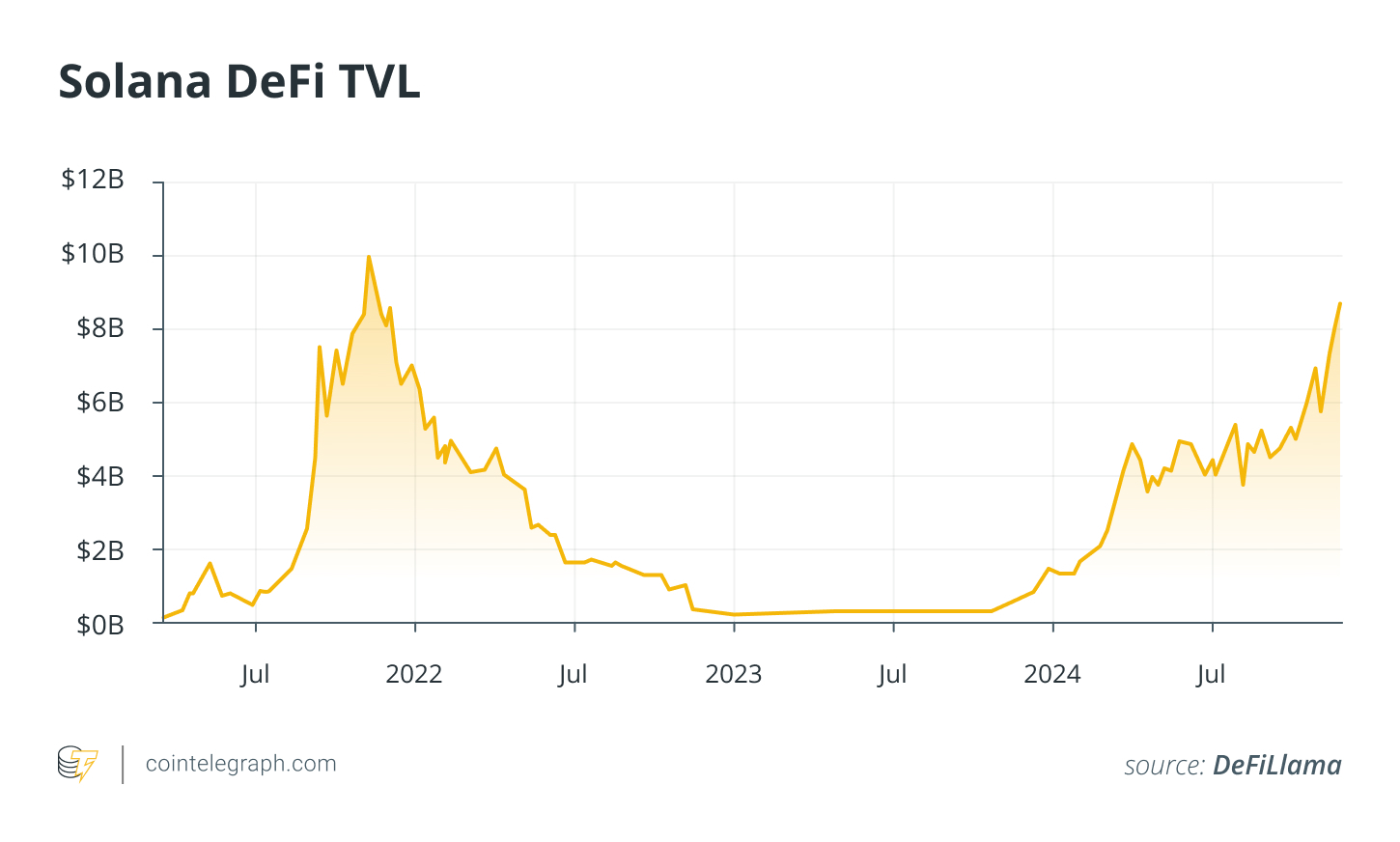
Solana returns to the DeFi stage in 2024, with TVL continuing to rise
"This essentially comes down to 'in terms of transaction throughput, how large can we make a single chain and a single Rollup, and how quickly can we settle them when liquidity needs to move from A to B? Assets can get there quickly, and users don't have to wait,'" Knox stated.
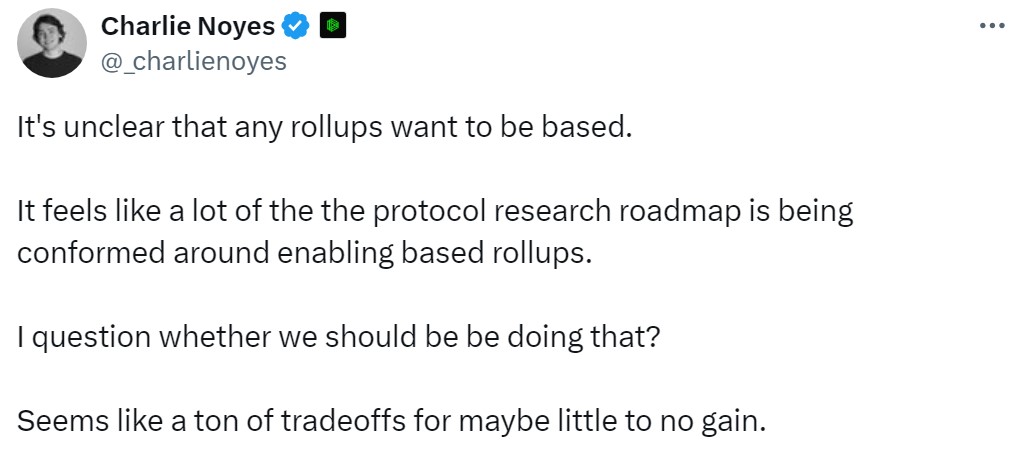
Layer 2 needs to adopt the Based Rollup approach to succeed, but not everyone agrees with this. Source: Charlie Noyes Twitter
Townsend stated that Based Rollups are "definitely" an effective solution for unifying the Ethereum ecosystem, but it is still a novel concept, and there is currently no active ecosystem.
Townsend said, "The obstacle we face is convincing these Layer 2s to give up their lucrative source of sorter revenue to join and participate in this interoperability ecosystem."
免责声明:本文章仅代表作者个人观点,不代表本平台的立场和观点。本文章仅供信息分享,不构成对任何人的任何投资建议。用户与作者之间的任何争议,与本平台无关。如网页中刊载的文章或图片涉及侵权,请提供相关的权利证明和身份证明发送邮件到support@aicoin.com,本平台相关工作人员将会进行核查。




